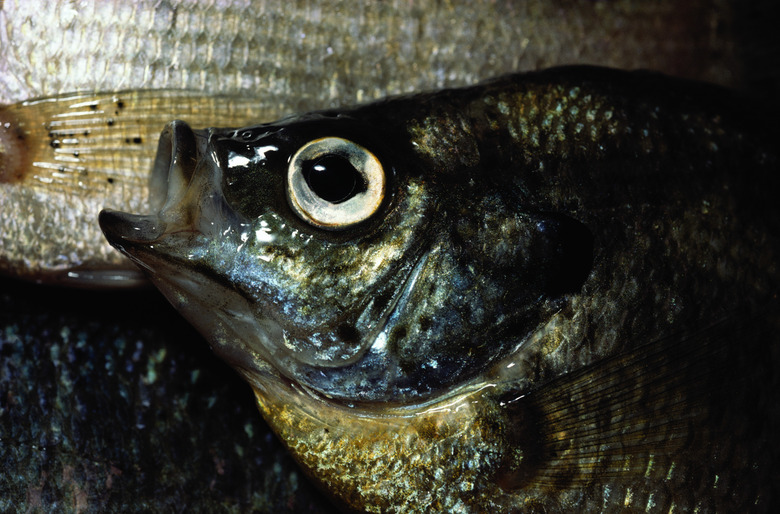How To Tell Male & Female Bluegills Apart
The bluegill, sometimes referred to as bream, brim, or copper nose, is the most abundant member of the sunfish family. A popular game fish with anglers, the bluegill is a good tasting fish which is relatively easy to catch. Telling the male and the female of the species apart can be tricky, but there are a few telltale signs that should allow you to distinguish between the two.
Step 1
Examine the color of the bluegill. Male bluegills tend to be a lot brighter than females, particularly in the the breeding season. If the fish you have caught exhibits bright coloration, then it is most likely a male.Males also tend to have a definitive spot at the posterior base of the dorsal fin and square, and heavily pigmented opercula lobes (the area covering the gills); in the female, the opercula lobe tends to be rounded and less pigmented.
Step 2
Check the fish's abdomen. During the breeding season, female bluegills tend to have a fuller, rounder abdomen than the male. If the abdomen is swollen in any way, then you are probably dealing with a female.
Step 3
Examine the fishes urogenital opening. A mature male bluegill's urogenital opening usually terminates in a small, funnel-shaped pore. The area around the opening tends to be darkly pigmented. The female's urogenital opening tends to resemble a small, swollen ring.
TL;DR (Too Long; Didn't Read)
It is easier to sex bluegill during the spawning season. This season begins in the spring when water temperatures reach about 70 degrees Fahrenheit, peaks in May or June, and continues until the water cools again in the fall.
An interesting characteristic of male bluegill is its ability to mimic the coloration of the female. It does this when another male is spawning with a female. The female mimic will approach the female from the opposite side, and release milt to fertilize some of the eggs. By adopting the coloration of the female, it does not arouse alarm in the male. Be aware of this when determining the sex of a bluegill, and check the urogenital opening if in doubt.
Cite This Article
MLA
Sutton, Dominic. "How To Tell Male & Female Bluegills Apart" sciencing.com, https://www.sciencing.com/tell-male-female-bluegills-apart-8097733/. 22 November 2019.
APA
Sutton, Dominic. (2019, November 22). How To Tell Male & Female Bluegills Apart. sciencing.com. Retrieved from https://www.sciencing.com/tell-male-female-bluegills-apart-8097733/
Chicago
Sutton, Dominic. How To Tell Male & Female Bluegills Apart last modified March 24, 2022. https://www.sciencing.com/tell-male-female-bluegills-apart-8097733/
